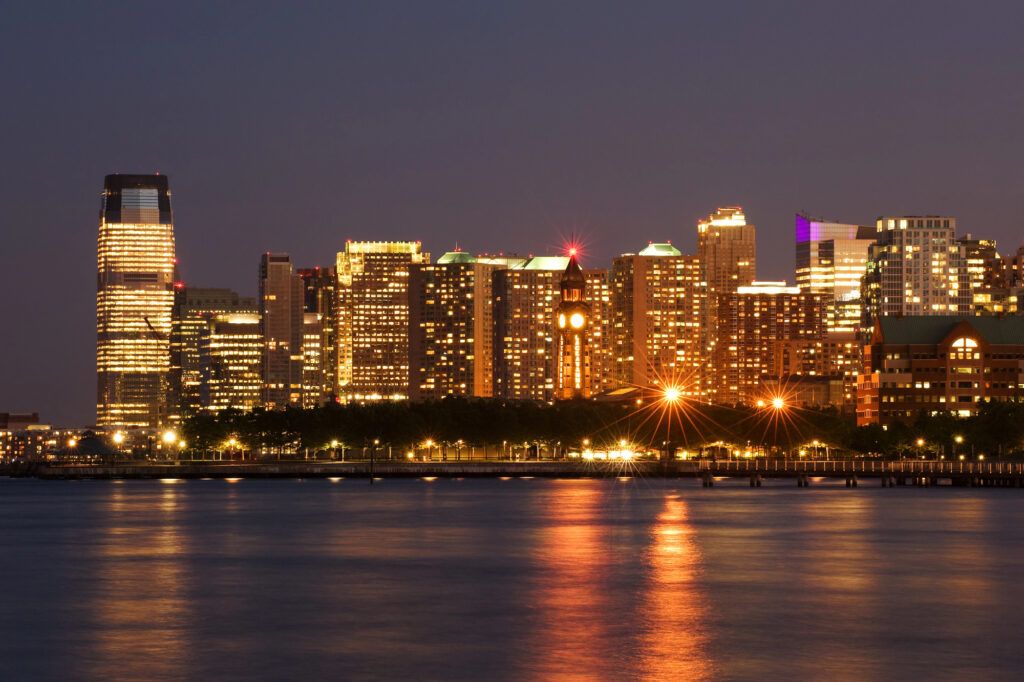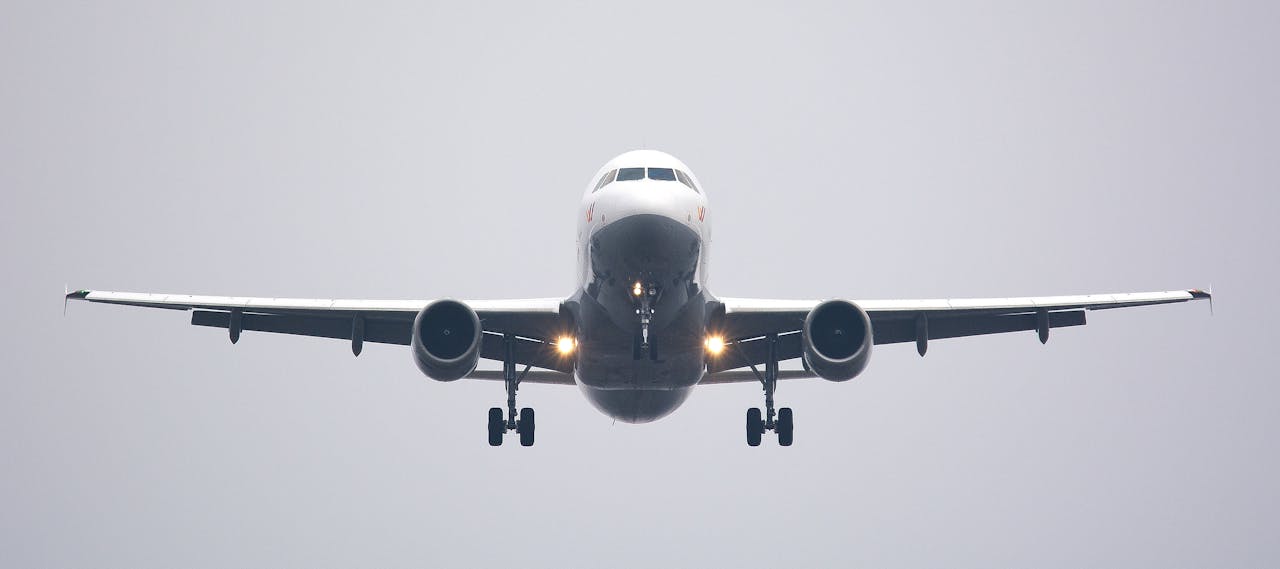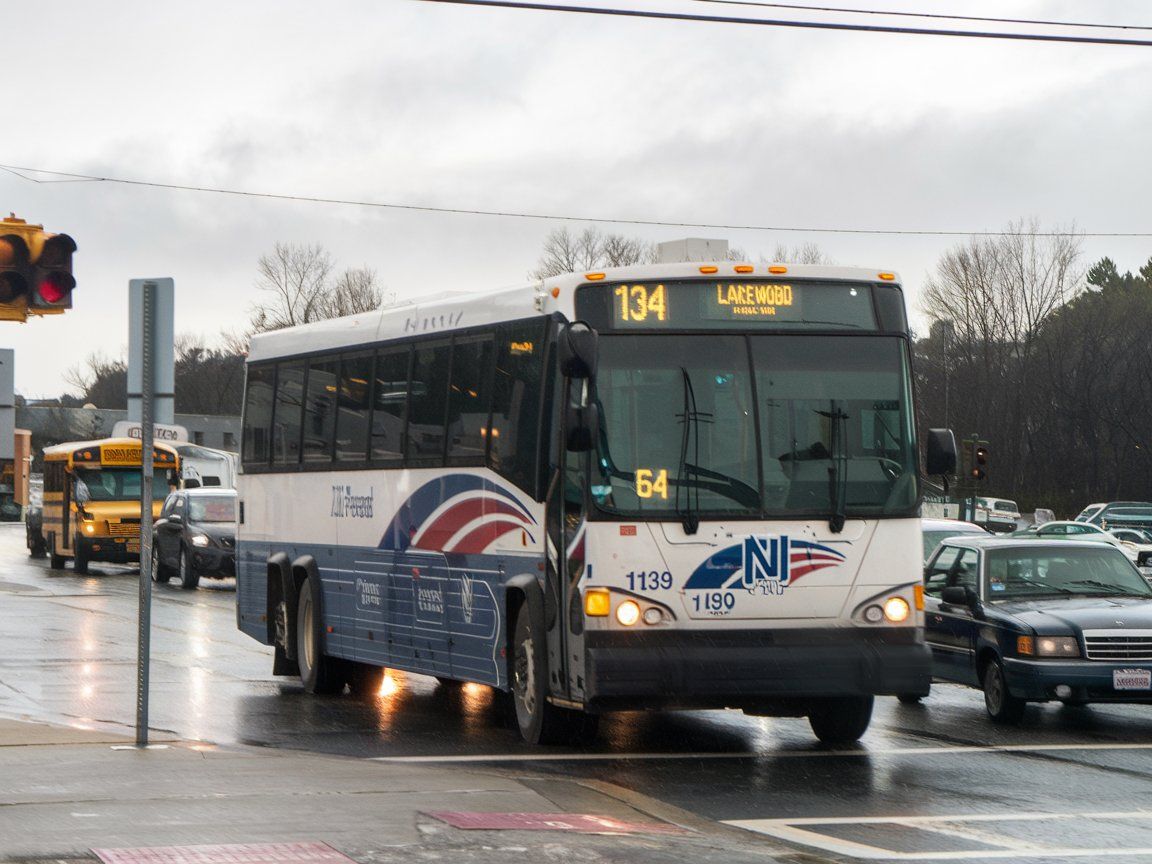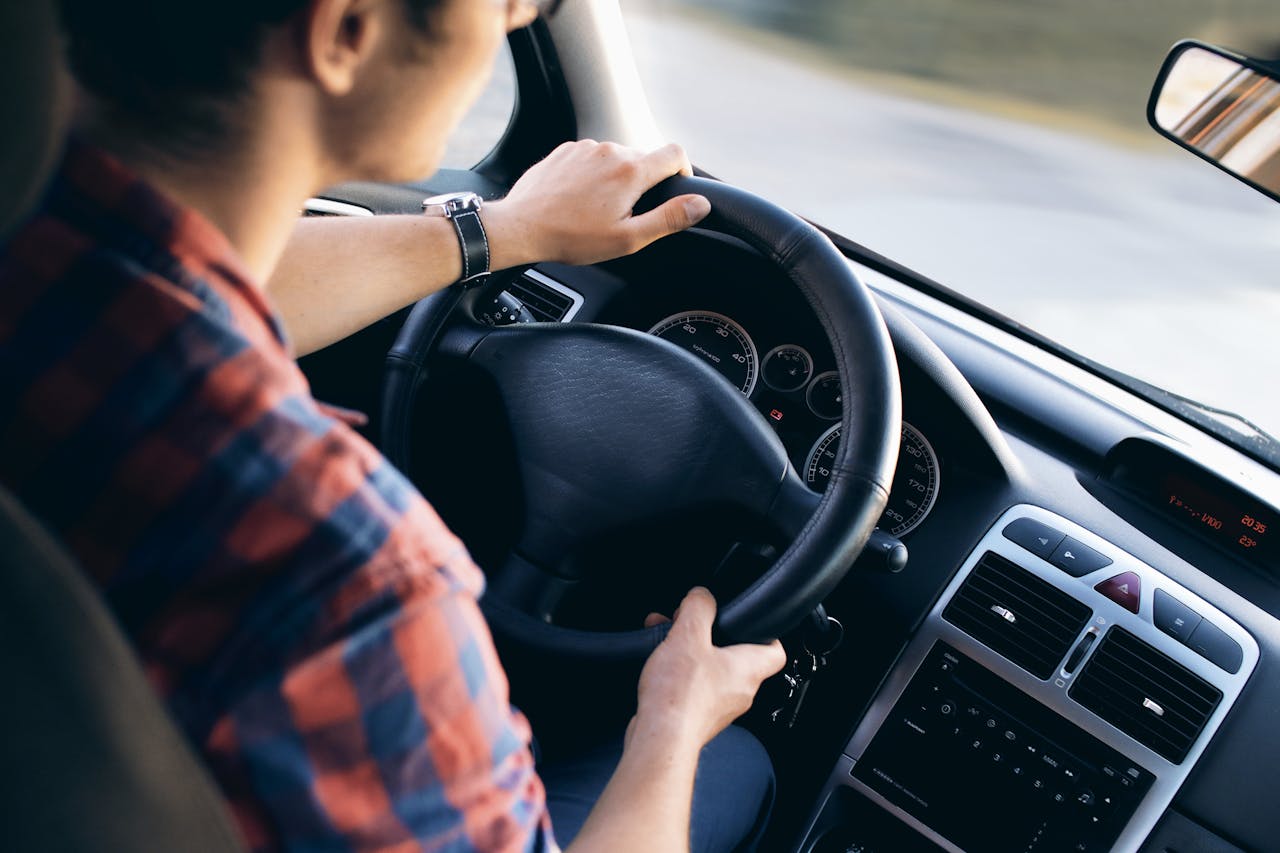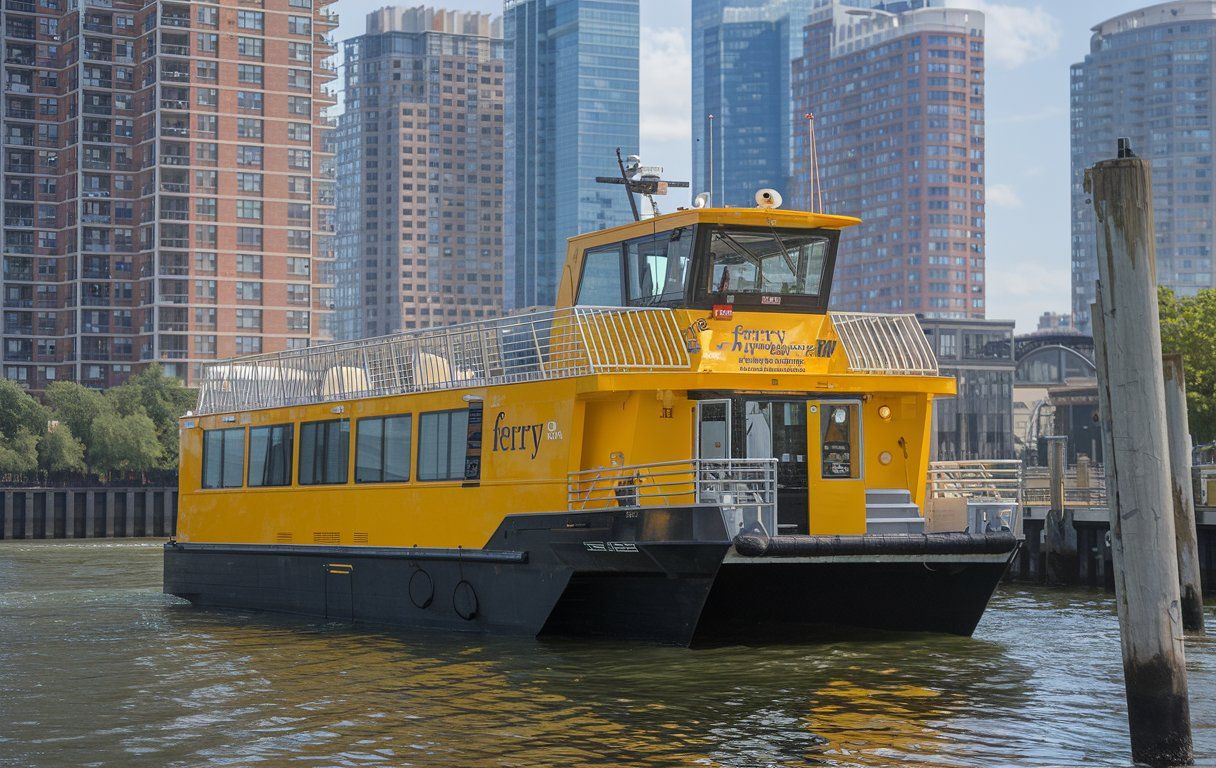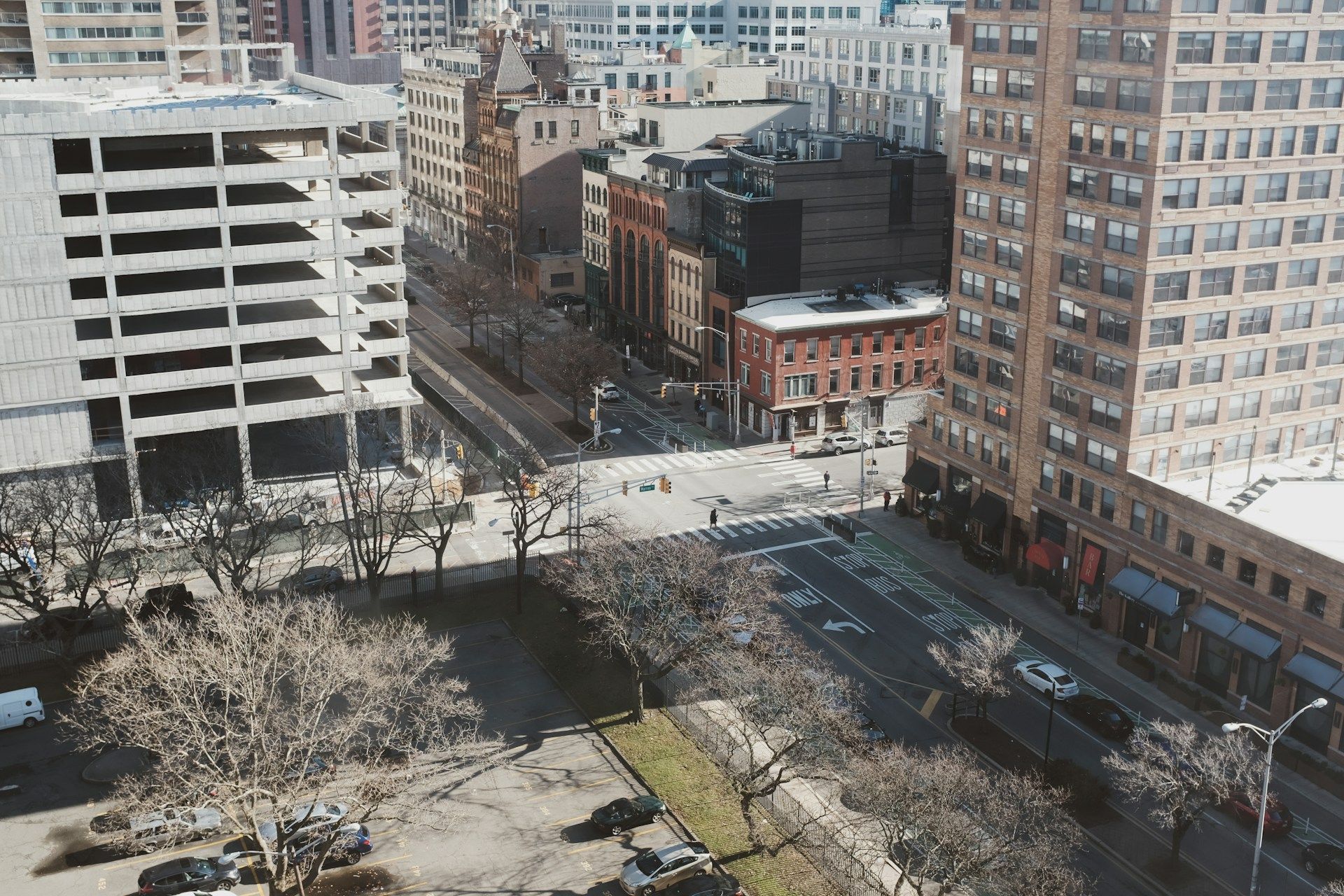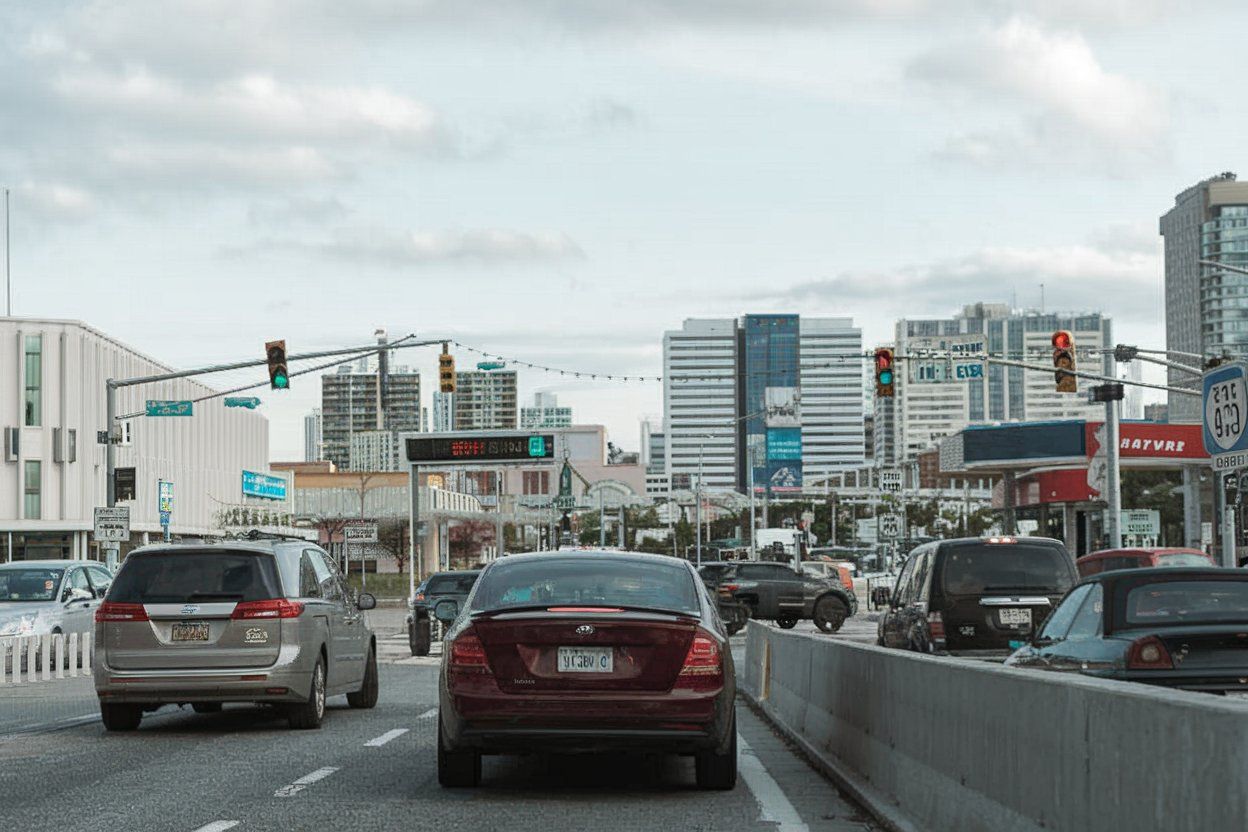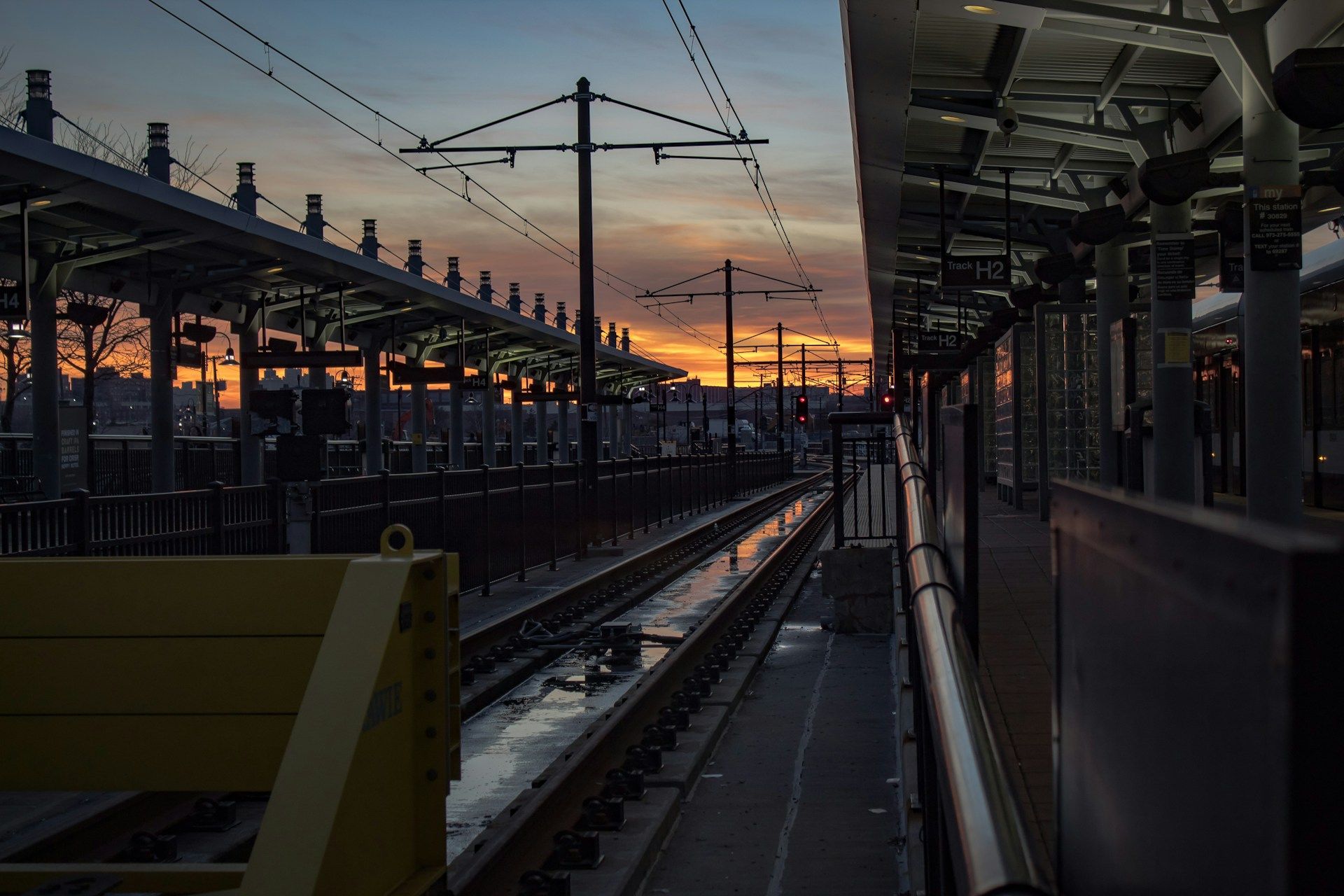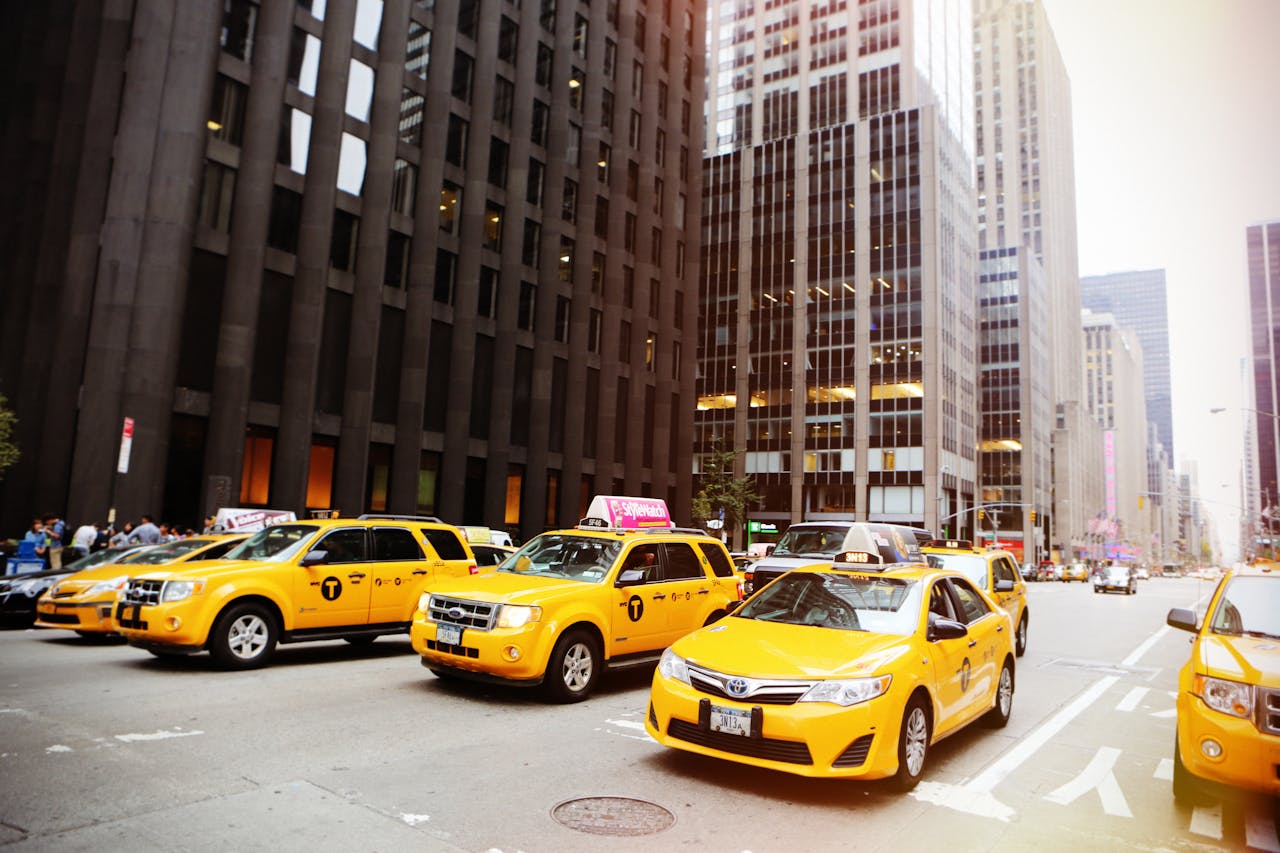You don’t need a car to get around Jersey City—thankfully, there are plenty of ways to move around. The PATH train gives you quick access to Manhattan, which is a huge plus for commuters and visitors. Along the waterfront, the Hudson-Bergen Light Rail links up several neighborhoods, and buses reach spots that are farther from train stations.
Jersey City’s public transportation system gives you lots of affordable ways to explore both the city and areas beyond. The Via rideshare app is a budget-friendly option for rides within city limits—super handy for short trips or connecting to the train. It really fills in the gaps, especially when you’re running errands or heading somewhere off the main transit lines.
Easy booking across hundreds of accommodations from luxury high-rises to unearthed brownstone treasures.
Browse Accommodations Now
If you’re into water travel, ferries offer a scenic way to cross the Hudson. Bike-sharing programs are also around for those who want a greener way to get around short distances. With these transportation options, you can experience Jersey City’s neighborhoods without the headache of driving or parking.
Public Transportation Overview
Jersey City has some of the highest transit usage rates in the country—about half the residents commute by public transportation. The city’s well-connected transit options make living without a car not just doable, but honestly, pretty convenient.
NJ Transit Services
NJ Transit runs a solid bus network throughout Jersey City and the surrounding area. Buses hit most neighborhoods and connect you to nearby New Jersey towns and even New York City.
The NJ Transit mobile app is your go-to for real-time bus tracking and buying tickets on your phone. You can check when your bus is coming and grab your ticket right from the app.
Each bus line has its own map, so you’ll want to check the NJ Transit website for the specific PDF route you need.
A few tips:
- Pay with cash (exact change is best) or use a mobile ticket
- Board at the front, exit at the rear
- Pull the cord near the window to signal your stop
PATH Train Network
The PATH (Port Authority Trans-Hudson) train is a rapid transit system connecting Jersey City with Newark, Harrison, Hoboken, and Manhattan. It’s often the quickest way to get between these places.
Jersey City’s PATH stations:
- Exchange Place
- Grove Street
- Journal Square
- Newport
Trains run all day and night, though you’ll wait a bit longer late at night. During rush hour, trains show up every 4-10 minutes. You’ll need either a SmartLink card or a pay-per-ride MetroCard—PATH doesn’t use NJ Transit’s payment system.
A lot of commuters take PATH into Manhattan daily. Exchange Place to World Trade Center? That’s just a few minutes.
Hudson-Bergen Light Rail
The Hudson-Bergen Light Rail runs along the Hudson River waterfront, connecting Jersey City neighborhoods with nearby towns. The ride is comfy, and the big windows make for some nice sightseeing.
Key stops in Jersey City:
- Liberty State Park
- Jersey Avenue
- Newport
- Exchange Place
- Marin Boulevard
Trains start early and run until around midnight, with arrivals every 5-20 minutes depending on the time. Remember to buy your ticket from the station vending machines before you board.
The light rail is especially handy for traveling north-south within Jersey City, and it’s an easy way to get to Liberty State Park or catch a NY Waterway ferry.
Bus Transportation in Jersey City
Jersey City’s bus network covers pretty much every neighborhood and connects you to nearby towns. NJ Transit runs most of the local buses, and you can easily reach other parts of New Jersey or even New York City.
Local Bus Routes and Schedules
NJ Transit buses serve all the main neighborhoods and landmarks. Popular routes include the 80 (JFK Boulevard), 87 (Journal Square to Hoboken), and the 119 (waterfront area). Routes 6 and 4 link the Heights to Journal Square.
Schedules vary, but most buses run from early morning until late at night. Weekdays are busier, so you’ll see more frequent service. You can grab printed schedules at big transit hubs like Journal Square or Hoboken Terminal.
Fares are reasonable—buy your ticket on the bus or through the NJ Transit app. If you ride often, a monthly pass might save you a few bucks.
Regional and Intercity Bus Connections
You can catch regional buses from Jersey City to places like Newark, Hoboken, the Jersey Shore, and beyond. The 126 bus heads to Manhattan’s Port Authority Bus Terminal.
For longer trips, you’ll find Greyhound and other intercity buses at Journal Square Transportation Center. They’ll get you to Philadelphia, DC, Boston, and other big East Coast cities.
Jitney minibuses (privately run vans) also operate on some routes, and sometimes they’re even more frequent than NJ Transit. You’ll see them along Bergenline Avenue and Kennedy Boulevard.
Real-Time Updates and Apps
Several apps make navigating Jersey City’s buses way easier. The official NJ Transit app gives you real-time arrivals, ticket purchases, and trip planning. Just enter where you’re starting and where you want to go.
Citymapper and Google Maps are also solid for transit directions. They combine bus, PATH, and light rail schedules, so you can find the quickest route.
These apps show you where your bus is in real time, which is a lifesaver during rush hour or bad weather. Set up notifications to get alerts about delays or service changes so you’re not left waiting at the stop.
Light Rail Options
Jersey City’s light rail is an affordable, easy way to get around town and visit nearby areas. The Hudson-Bergen Light Rail connects key destinations across Jersey City and stretches into other cities.
Hudson-Bergen Light Rail Stations
You’ll find several light rail stations in Jersey City, with major stops at Exchange Place, Newport, and Journal Square. Buy tickets at vending machines before boarding or grab them on the NJ TRANSIT Mobile App, which now offers daily tickets.
The system uses a proof-of-payment setup: just have your ticket ready in case someone asks, but you won’t need to show it to get on.
Find available hotels and vacation homes instantly. No fees, best rates guaranteed!
Check Availability Now
Trains come every 5-10 minutes during rush hours and every 15-20 minutes off-peak. On weekends, you’ll usually wait 15-30 minutes.
Connecting to Nearby Cities
The light rail goes beyond Jersey City, so you can easily get to nearby spots like Hoboken (where you can hop on the PATH or a ferry to Manhattan) or Bayonne to the south. To reach Newark, you’ll need to transfer to the Newark Light Rail at certain points.
Fares depend on how far you go—usually between $2.10 and $2.75 one-way. A day pass might be a good deal if you’re making a bunch of trips.
If you’re heading to Trenton or Camden, NJ TRANSIT runs separate light rail systems there, though they aren’t linked to the Hudson-Bergen line.
Ferry Services and Waterfront Access
Jersey City sits right on the Hudson River, so you’ve got some great water travel options. The ferry system is both scenic and quick for getting between New Jersey and New York City, with several terminals in different neighborhoods.
Hudson River Ferries
NY Waterway runs multiple ferry routes from Jersey City. Main terminals include Paulus Hook (downtown) and Harborside at 210 Hudson Street. Port Liberte recently brought back ferry service to Wall Street in Manhattan for weekday commuters.
People love these ferries for their reliability and those amazing Manhattan views. Most terminals are close to popular spots like Newport Centre, so they’re convenient whether you live here or you’re just visiting.
For schedules or updates, call NY Waterway at 800-533-3779 or use their app for contactless ticketing.
Ferry Connections to Manhattan
Ferries from Jersey City to Manhattan run often and make for a relaxing trip. You can reach both Midtown and Downtown Manhattan on different routes. Paulus Hook to Lower Manhattan? That’s just a few minutes—often faster than driving during rush hour.
NY Waterway even throws in free shuttles around Midtown after you dock, so you can get to your final stop without extra cost. For commuters, it’s a solid option.
If you’re looking for beach access, ferries from Jersey City can get you close to Sandy Hook, but you’ll need another ride to reach the sand. The combo of quick water crossings and connecting services makes the ferry system a great way to get around.
Bike and Scooter Transportation
Getting around on two wheels is pretty popular in Jersey City. E-bikes, regular bikes, and electric scooters have caught on with both locals and visitors.
Citi Bike Share Program
Citi Bike is the city’s bike-share system. You grab a blue bike at one station and drop it off at another—easy. Stations are open 24/7 all over the city.
Buy single rides, day passes, or an annual membership in the Citi Bike app. Annual memberships are about $179 for unlimited 45-minute rides, while single rides go for around $3.50 for 30 minutes.
You’ll find both pedal bikes and electric-assist bikes (for a bit more). E-bikes are awesome for climbing Jersey City’s hills.
Stations are placed near PATH stations, light rail stops, and busy spots, so Citi Bike is great for that “first/last mile” when you’re using public transit.
Bike Lanes and Cycling Infrastructure
Jersey City has really stepped up its bike infrastructure lately. Protected bike lanes run along major streets like Grand Street and Bergen Avenue, keeping cyclists separated from cars.
The city’s bike network has:
- Protected lanes with barriers
- Painted lanes on busy roads
- Shared “sharrows” on quieter streets
- Multi-use waterfront paths
The Hudson River Waterfront Walkway is a favorite for car-free riding along the city’s east edge—perfect for commuting or just taking in the views.
Jersey City keeps adding new bike lanes every year. Check the city website for the latest bike map before you head out.
Accessibility and Safety
Jersey City supports micromobility—think e-bikes and scooters—as green alternatives to driving. NJ Transit lets you bring these devices onboard for those first/last mile connections.
The city’s added battery swap stations where you can trade a dead e-bike battery for a fresh one. These stations also offer designated parking and charging for micromobility rides.
When you’re riding:
- Wear a helmet (seriously, it’s smart)
- Use lights at night
- Obey traffic laws and signals
- Watch out for potholes and rough patches—some streets are a bit bumpy
Many intersections have bike boxes that put cyclists front and center at red lights. Use them to stay visible to drivers.
On-Demand and Ride-Sharing Services
If you don’t own a car—or just don’t want to use it—Jersey City’s got you covered with several flexible ride options. These services come in handy when public transit isn’t quite enough.
Via Jersey City
Via Jersey City has changed how people get around here. You can request a purple minivan through the app, and most rides cost just $2—way cheaper than typical rideshares.
Since launching in 2019, Via has given over two million rides. About 80% of Via trips serve minority communities, helping people in areas that don’t have great transit options.
Luxury stays to cozy apartments await, all with instant booking. Find the best deals!
Browse Jersey City Stays
Via connects folks to jobs, schools, healthcare, and other transit lines. If you’re heading somewhere that buses or trains don’t reach, it’s a solid choice.
Just download the app, punch in your pickup and drop-off, and you’re set. Via runs all over Jersey City, with trips between the Outer Zone and Central Zone still just $2.
Taxis and Rideshare Apps
You’ll still spot traditional taxis in Jersey City, but honestly, they’re not as common as they used to be. If you need one, you can hail a cab on some of the busier streets or just call for a pickup.
These days, most folks prefer rideshare apps like Uber and Lyft. They’re everywhere in Jersey City and connect pretty easily to nearby towns. You can choose anything from a basic ride to something a bit fancier, depending on your mood or budget.
Prices on Uber and Lyft bounce around depending on demand, time of day, and how far you’re going. Usually, they’re pricier than Via, but you get direct service and don’t have to share your ride with strangers.
A lot of hotels will help you get a taxi if you ask at the front desk. This comes in handy if your phone’s not getting signal or if you just don’t want to mess with apps.
Driving and Parking in Jersey City
Driving in Jersey City gives you more freedom, but it comes with its own headaches. If you know where to park and how to handle the busy streets, you’ll have a much better time.
Parking Options and ParkMobile
Parking isn’t impossible, but you need to pay attention to the rules. Many residential streets need permits if you want to stay longer than 2 hours. Always check the signs—they’ll tell you if you need a permit or if there are other restrictions.
For visitors, parking garages can save you some hassle. The garage at Journal Square PATH station charges about $25 a day, which isn’t terrible if you’re heading into NYC.
Most street parking uses ParkMobile. Download the app before you arrive so you can pay and extend your time from your phone—it’s a real time-saver.
Metered parking pops up in several neighborhoods, but the rates and time limits change depending on where you are. Downtown costs more and has shorter limits, while spots farther out are usually cheaper and less strict.
Major Roads and Highways
Jersey City connects to a bunch of major highways, making it pretty easy to get around New Jersey or head into New York. The Holland Tunnel takes you straight into Manhattan, but traffic there can be brutal during rush hour.
The New Jersey Turnpike (I-95) runs along the city’s west side, giving you a way north or south. Route 139 hooks up with the Holland Tunnel, but it’s often jammed.
You can get to the Garden State Parkway from Jersey City through connecting highways, and it’s the main north-south road through the state. Kennedy Boulevard also runs north-south and cuts through the heart of the city.
Route 1-9 (Tonnelle Avenue) is another big one, leading to the Lincoln Tunnel and George Washington Bridge.
Traffic and Driving Tips
Traffic’s no joke in Jersey City, especially during the morning and evening rush (7-9 AM and 4-7 PM). If you’re driving at those times, give yourself extra time to get where you’re going.
Navigation apps like Waze or Google Maps make things a lot easier. They’ll give you live traffic updates and suggest better routes if things get backed up.
Finding street parking downtown or near the waterfront is tough. Sometimes it’s just easier (if a little pricier) to park in a garage.
Watch out for street cleaning days—they’ll ticket you fast if you don’t move your car. The fines aren’t cheap.
Jersey City has plenty of one-way streets, especially in the older neighborhoods. Keep an eye on the signs so you don’t end up going the wrong way.
Travel Connections Beyond Jersey City
Jersey City sits in a sweet spot for exploring nearby cities and attractions. Thanks to all the public transit options, you don’t really need a car to get to most places.
Travel to Newark and New York City
Getting to Newark is a breeze on the PATH train—it runs between Jersey City and Newark Penn Station in about 20 minutes, and the fare is around $2.75. NJ Transit buses also serve this route with plenty of trips throughout the day.
Heading into New York City? You’ve got options:
- PATH trains run to several spots in Manhattan, like World Trade Center and 33rd Street
- NY Waterway ferries leave from Paulus Hook Terminal and take you to downtown NYC
- NYC Ferry connects to Manhattan and Brooklyn
- NJ Transit buses go to Port Authority Bus Terminal
Most commuters stick with the PATH for NYC since it runs 24/7 and gets extra trains during rush hour. If you’re out late, you can still catch the PATH or grab an Uber or Lyft back.
Day Trips and Excursions
Jersey City makes a great base for checking out New Jersey’s best spots. Cape May is a lovely Victorian beach town about 2.5 hours away by car, or you can get there using NJ Transit’s bus or train.
If you’re after cultural experiences, Princeton University is just an hour away by train. Take the NJ Transit Northeast Corridor line from Secaucus Junction and you’re set.
Other trips worth considering:
- Atlantic City (2.5 hours with NJ Transit)
- Asbury Park’s boardwalk (1.5 hours by train)
- Hiking in the Delaware Water Gap (about 90 minutes by car)
You can catch Amtrak at Newark Penn Station or New York Penn Station for longer trips—think Philly, DC, or Boston. A lot of locals grab weekend packages for a quick escape.
Sustainable Transportation Initiatives
Jersey City really pushes green transit. The city wants to cut emissions and make it easier for everyone to get around without a car.
Reducing Traffic and Emissions
Via rideshare has taken off here, with over two million rides so far. It’s affordable, on-demand, and runs through a simple app. What’s cool is that 80% of Via rides serve minority communities—Jersey City clearly cares about transportation equity.
With Citi Bike, you can grab a bike at one station and drop it off at another, making short trips fast and car-free.
The Light Rail links up different parts of Jersey City with minimal environmental impact. Pair it with the PATH train to New York, and you can get around the whole region without racking up a big carbon footprint.
City Programs and Policies
The Fulop Administration really put sustainable transportation front and center with the “JC on the Move” initiative. Over the past year, they dug into new transportation tech, hoping to make it easier for folks to get around town.
Find the perfect hotel or vacation rental. Instant booking, no fees!
View Top Stays
Jersey City’s transportation efforts now aim for both sustainability and fairness. You’ll spot expanded transit options that try to reach every neighborhood—plus, they’re working on cutting down pollution at the same time.
The city teams up with NJ TRANSIT, which calls itself a “sustainable transportation provider.” Together, they push for growth that includes everyone in Jersey City.
City planners keep adding better bike lanes and safer paths for people on foot. These upgrades make it less stressful to walk or ride your bike, and honestly, they just make life in the city a bit nicer.

